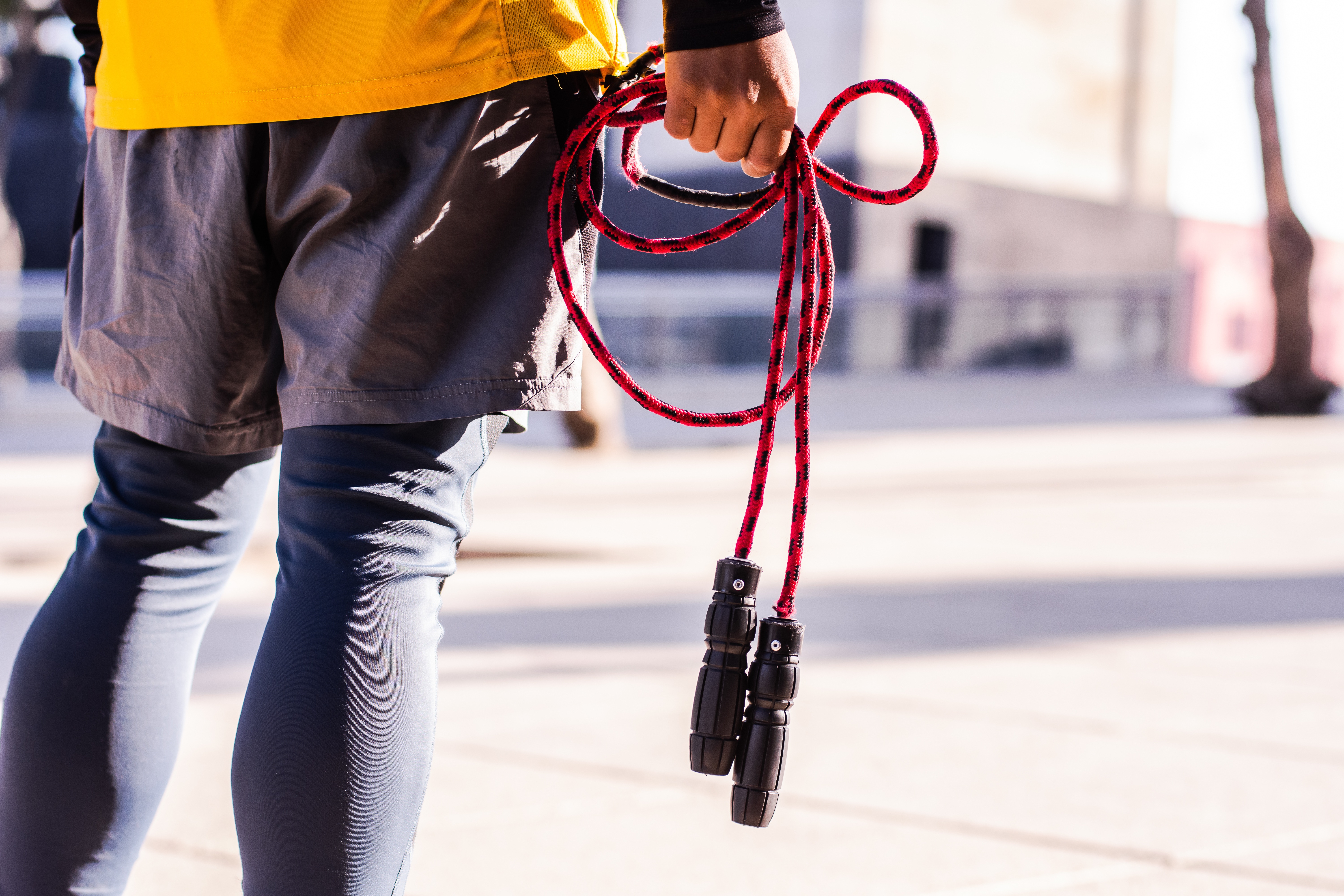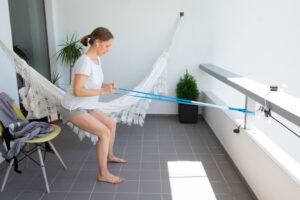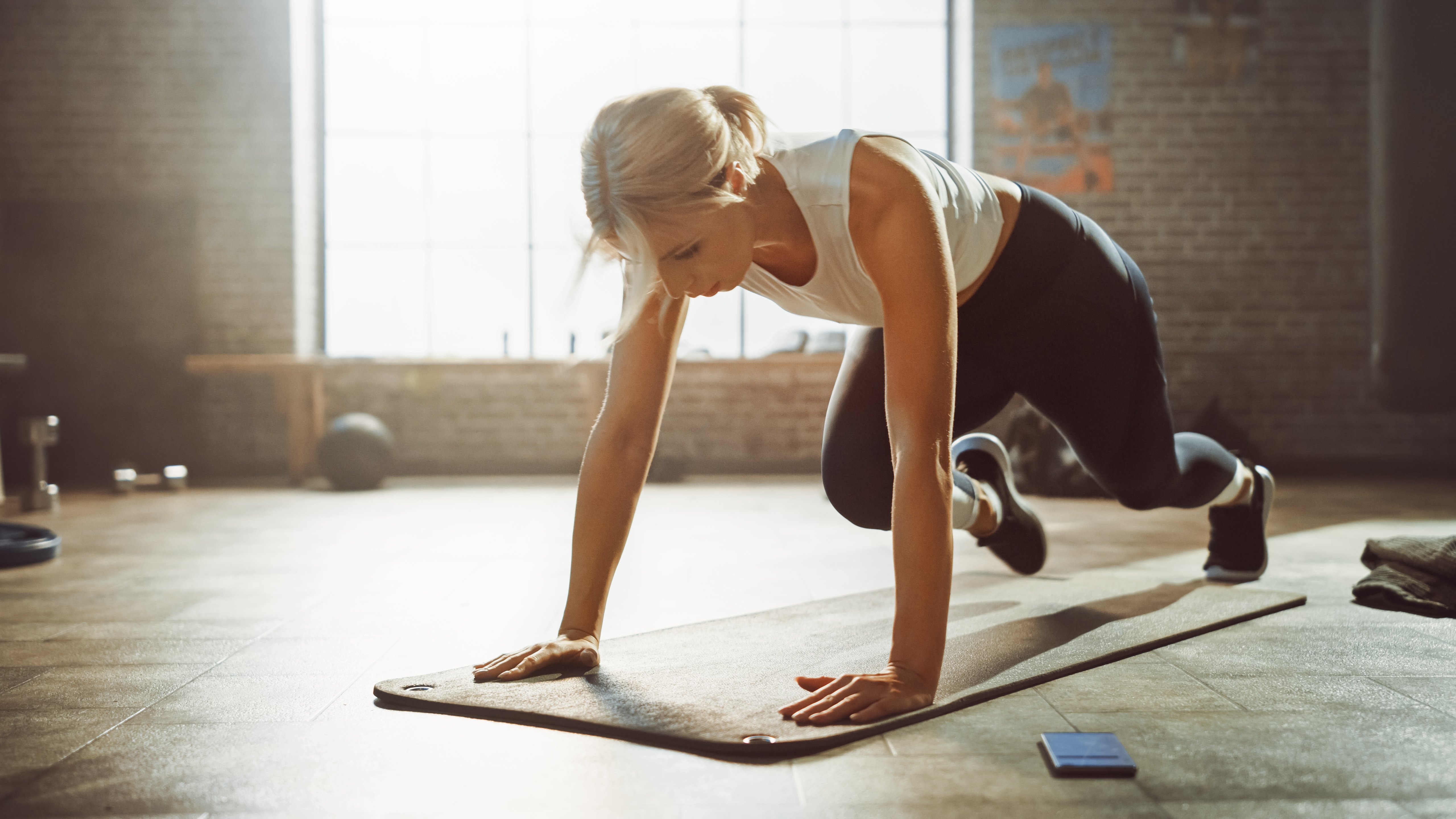
Don’t have the money to join a gym or buy expensive exercise equipment? You’re in luck. There are cheap and even free ways to get an effective workout, and most of these you can do at home. The health benefits of exercise are too important to miss out on. So, the next time you think working out has to be expensive, here are five items you can use to get a cheap but effective workout.
1 Empty Gallon or Laundry
If you want to add weight training to your workout routine you can easily do this by adding water or sand to you empty gallon or laundry detergent bottle. Since most of us use laundry detergent, this by far is the cheapest way to add weights to your routine. 1 gallon of water weighs approximately 8 pounds. Therefore, don’t throw out your gallon bottle, save it and add water to it .
You can add sand or rocks to make it even heavier.
2. A Jump Rope
Jumping rope is one of the best total body workouts you can do with a single piece of equipment. Jumping rope quickly elevates your heart rate enough to get cardiovascular benefits, and you’ll build up greater stamina and endurance. Plus, a person of average weight burns around 10 calories per minute jumping rope at a moderate rate.
You can make a jump rope workout as easy or intense as you like based on how fast you jump. Start by jumping only 10 seconds and keep increasing the time until you can jump for a full minute. Then work on increasing the speed of your jumps for greater intensity. Jumping rope improves agility and coordination while you’re getting fitter and leaner.
3. Your Own Bodyweight
How about an equipment-free workout? You won’t have to spend a penny if you use your own body weight as resistance. Some of the best bodyweight exercises you can do almost anywhere are push-ups, bodyweight squats, wall squats, planks, abdominal crunches, and triceps dips. With these options, it’s possible to get a whole-body workout without leaving home. You can make the exercises harder by increasing the number of repetitions or holding planks or wall squats longer. For bodyweight push-ups, placing your hands closer together increases the intensity and also works your triceps harder.
4. A Stability Ball
A stability ball is an inflatable ball that hits about knee height for most people. You can use this super-sized ball to do a variety of exercises, including those that work your core. The most common way people use it is to do abdominal crunches with their back on the ball. The instability of the ball forces your entire core to work harder. You can also place your feet and lower legs face down on the ball and your hands on the floor and do push-ups. The unstable surface of the ball works your core harder than a standard push-up.
Another popular exercise with a stability ball is the stability ball raise. For this exercise, place the ball between your calves and raise your legs off the floor until they’re perpendicular to the ceiling. You’ll quickly feel the tension in your lower abs and will be one step closer to building ab strength and definition.
There are other exercises you can do with a stability ball and you’ll find descriptions of many more online. You can even use one as a seat when you work. Replacing your chair with a stability ball will engage your core more. Best of all, they’re not expensive.
5. A Park Bench
Surprisingly, you can get a decent workout at a park that has a bench. To get your heart rate up, jog or walk briskly around the park. Then stop at a park bench and pause long enough to do a few exercises, starting with the good, old push-up. Place both hands on the seat of the bench and stretch your legs behind you. Push your chest and upper body away from the bench and then back down. Feel the burn in your chest and arms.
Now jog around the park again, come back to the bench, and place your palms on the bench with your fingers facing toward you. Then use the bench to do a set of triceps dips. Both push-ups and triceps dips are effective upper body exercises that require no equipment.
6. Resistance Bands
A set of resistance bands offers a wealth of possibilities for working your entire body. You can do most of the exercises you do with dumbbells, a barbell, or kettlebells, and many more. Some resistance bands have special attachments you can hook to a door or handles you can grip on to for various exercises.
Resistance bands have some advantages over dumbbells and barbells since you can work your muscles in multiple planes of motion. When you use weights, you have to work in the direction of gravity, but resistance bands rely on the tension created by the bands rather than gravity. Plus, the tension remains high throughout the movement. In contrast, the tension drops off at the top of a movement when you use weights. So, you can get a superior workout with resistance bands at a low cost. Plus, you can take them with you if you travel.
The Bottom Line
Lack of money or a gym membership isn’t an excuse not to work out. These exercise props are affordable and effective. Now, it’s up to you to put them to use!
References:
- J Pediatr Endocrinol Metab. 2020 Jan 28;33(1):129-137. doi: 10.1515/jpem-2019-0327.
- MayoClinic.org. “Is body-weight training effective as a strength training exercise?”
- SAGE Open Med. 2019; 7: 2050312119831116.Published online 2019 Feb 19. doi: 10.1177/2050312119831116.




